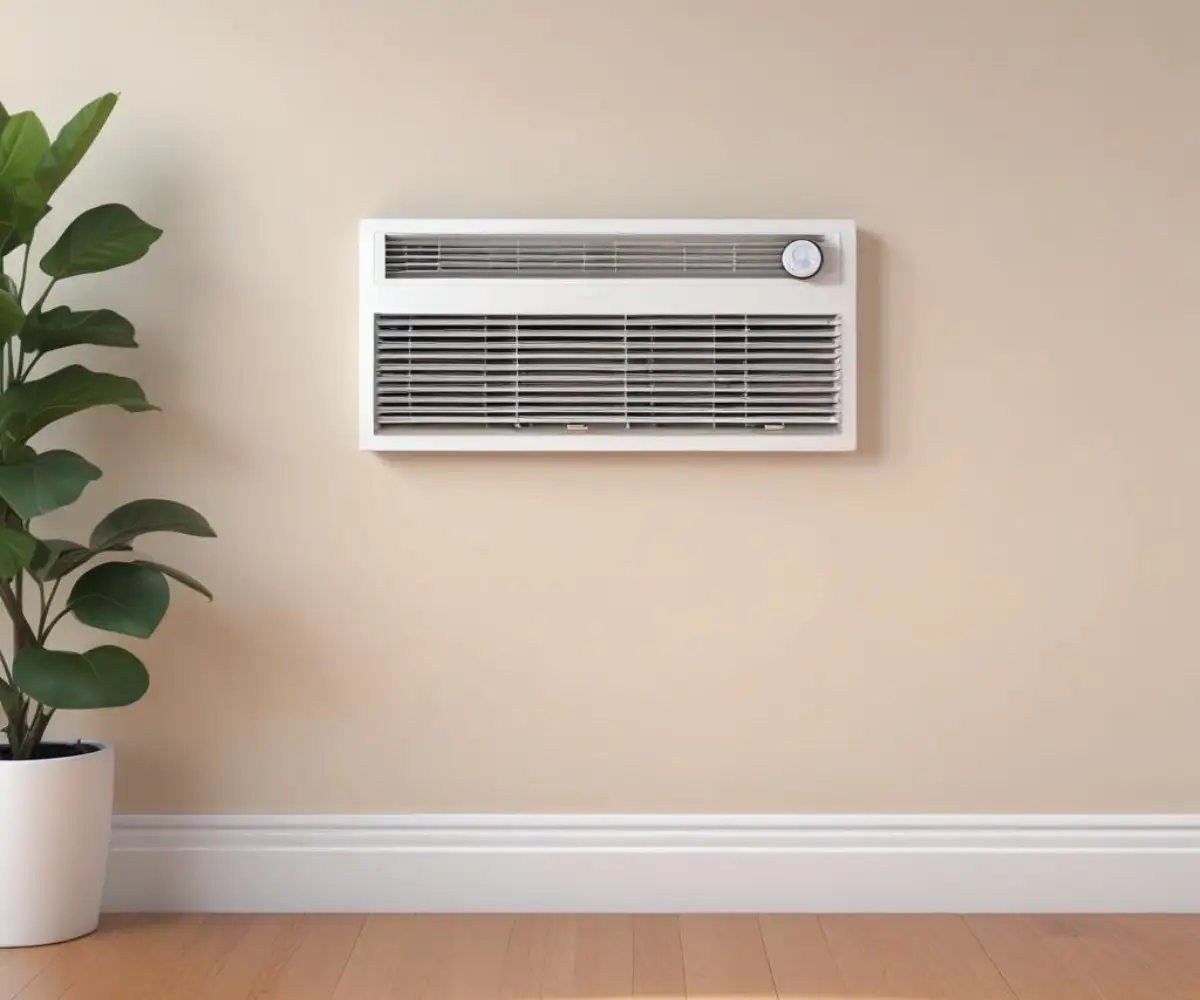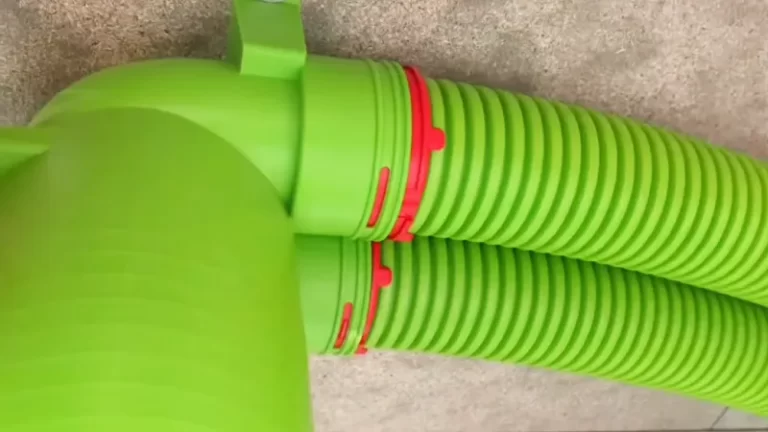Ecovent Reviews: The Truth About Smart Vents Before You Buy
That one room in your house is always too hot in the summer and an icebox in the winter. You’ve tried closing the manual vents in other rooms, only to create a noisy, inefficient mess. This daily battle for comfort is a common problem stemming from a single thermostat trying to manage the climate for an entire home, leading to frustrating hot and cold spots and wasted energy.
The core issue lies with centralized HVAC systems designed for simplicity, not precision. They treat your entire home as a single zone, ignoring factors like sun exposure, room size, and occupancy. This inefficiency forces your system to work harder, driving up energy bills while failing to deliver consistent comfort where you need it most.
You'll Learn About
What is Ecovent and How Does It Claim to Solve Uneven Temperatures?
Ecovent enters the market as a potential solution to this widespread problem. It’s a “smart” HVAC zoning system that replaces your existing vent registers with motorized, wirelessly controlled ones. The system is composed of three main components: the smart vents themselves, room temperature sensors, and a central hub that communicates with everything via a smartphone app.
The principle is simple yet powerful: by installing these components, you can create individual temperature zones for each room. The sensors constantly monitor the temperature and pressure in each space, relaying that information back to the hub. The system then automatically opens or closes the smart vents to direct conditioned air precisely where it’s needed, aiming to eliminate those stubborn hot and cold spots. This room-by-room control promises not only enhanced comfort but also significant energy savings by not heating or cooling unoccupied rooms.

The Big Question: Do Smart Vents Like Ecovent Actually Work?
The concept of creating distinct climate zones in a home is the foundation of modern HVAC efficiency. Smart vent systems like Ecovent bring this technology to homeowners without the invasive and costly process of traditional ductwork modification. By intelligently redirecting airflow, these systems can genuinely resolve uneven temperatures in many homes.
The primary benefit is a noticeable increase in comfort. Users often report that rooms once deemed unusable during extreme weather become pleasant and consistently comfortable. However, the promise of energy savings can be more complex, as it depends heavily on usage patterns and home insulation. While the potential for savings is real, it’s the targeted comfort that stands out as the most immediate and tangible advantage.
Ecovent Reviews Uncovered: The Good, The Bad, and The Ugly
Diving into user feedback and professional analysis reveals a mixed but insightful picture of the Ecovent system. While many users praise its effectiveness, others point to significant drawbacks and potential risks that every prospective buyer should consider.
The Good: What Users Love
Many homeowners who have installed Ecovent systems report a dramatic improvement in home comfort. The ability to set specific temperatures for different rooms and have the system automatically maintain them is a frequently highlighted benefit. Users love the sleek, modern design of the vents and the convenience of controlling their home’s climate from a smartphone app. For those with persistent hot or cold spots, Ecovent has often been the long-awaited solution that finally balances their home’s temperature.
The Bad: Common Complaints and Criticisms
Despite the successes, negative Ecovent reviews often point to a few recurring issues. Connectivity problems between the vents, sensors, and the hub can be a source of frustration, leading to rooms not being heated or cooled correctly. Some users have experienced software bugs within the app and challenges with the initial calibration process. Furthermore, the overall cost of outfitting a home with Ecovent can be substantial, and the battery life of the wireless components can be shorter than advertised, requiring periodic replacement.
The Ugly: The HVAC Professional’s Warning
The most serious concern, often raised by HVAC professionals, revolves around static pressure. Your home’s HVAC system is engineered to handle a specific amount of air pressure within the ductwork. When multiple smart vents close simultaneously, they can restrict airflow, causing a dangerous buildup of static pressure. This increased pressure puts significant strain on the HVAC unit’s blower motor and can lead to serious, costly damage, including a cracked heat exchanger or a frozen evaporator coil.
While Ecovent and similar systems have built-in pressure sensors to prevent this, they are not foolproof. An older or poorly maintained HVAC system may be particularly vulnerable. This single issue is the most critical factor to understand before investing in any smart vent system, as it carries the potential for expensive mechanical failure.
Ecovent vs. The Competition: Flair, Keen, and Traditional Zoning
Ecovent isn’t the only player in the smart vent market. Flair and Keen are two other prominent brands that offer similar functionality, each with its own strengths and weaknesses. Understanding how they compare, and how they stack up against traditional HVAC zoning, is key to making an informed decision.
Ecovent vs. Flair and Keen
Flair is often praised for its robust software, strong integration with smart thermostats like Ecobee, and durable metal vent covers. Keen, known for its appearance on “Shark Tank,” offers a more budget-friendly entry point but has faced criticism for reliability. Ecovent has positioned itself as a premium, professionally-supported system, which is reflected in its higher price point. However, it appears that Keen acquired Ecovent, consolidating the brands.
| Feature | Ecovent | Flair | Keen Home |
|---|---|---|---|
| Vent Material | Polymer/Plastic | Steel | Plastic |
| Power Source | Battery Operated (AA) | Battery (C-cell) or Hardwired | Battery Operated (AA) |
| Smart Home Integration | Good, works with popular smart thermostats | Excellent, especially with Ecobee | Compatible with Nest and other platforms |
| Key Differentiator | Marketed as a whole-home, professionally supported system | Highly rated software and option for hardwiring | Often the most affordable option |
| Pressure Monitoring | Yes, built into vents | Yes, built into vents and Puck sensors | Yes, built into vents |
Smart Vents vs. Traditional HVAC Zoning
Traditional HVAC zoning involves installing mechanical dampers directly inside your ductwork, which are controlled by multiple thermostats. This method is considered the gold standard by professionals for its reliability and effectiveness. However, it is also significantly more expensive and invasive, requiring professional installation and modification of your existing ducts.
Smart vents offer a less invasive, DIY-friendly alternative at a fraction of the cost. While they may not offer the same level of robust control as a traditional zoned system, they provide a powerful and accessible way for homeowners to achieve room-by-room climate control.
Is Ecovent the Right Solution for YOUR Home? A Buyer’s Checklist
A smart vent system can be a transformative upgrade, but it is not a universal solution. Before you invest in Ecovent or any similar product, it’s crucial to assess your home’s specific needs and the health of your existing HVAC system. Answering a few key questions can save you from a costly mistake.
This technology is best suited for homeowners with specific, persistent temperature imbalances in an otherwise well-functioning house. If you are comfortable with smart home technology and willing to engage in some troubleshooting, a system like Ecovent could be a perfect fit. However, if your HVAC system is old, has known issues, or if you prefer a “set it and forget it” solution, you may want to explore other options first.
Follow these steps before making a purchase:
- Schedule an HVAC Inspection: Have a professional technician inspect your furnace, air conditioner, and ductwork. Ensure your system is in good health and can handle the potential changes in airflow and pressure.
- Address the Basics First: Often, hot and cold spots are symptoms of poor insulation, air leaks, or inefficient windows. Sealing leaks and improving insulation can sometimes solve the problem for a much lower cost. While checking your attic or basement, ensure you don’t have other underlying issues, and if you find any problems like improperly secured wiring, learn about topics like how to cover exposed Romex for safety.
- Calculate the Total Investment: Smart vent systems require more than just the vents. Factor in the cost of a hub and enough sensors for each room you want to control. The total cost for a whole-home solution can quickly add up to thousands of dollars.
Installation and Setup: A Step-by-Step Guide (and Potential Pitfalls)
One of the main appeals of smart vent systems is the promise of a straightforward, DIY installation. For the most part, replacing your old vent registers with Ecovent units is as simple as it sounds, requiring only a screwdriver. However, the setup and calibration of the software and sensors are where users sometimes encounter difficulties.
The process typically involves swapping out the physical vents, placing the sensors in each room, plugging in the central hub, and then following the app’s instructions to connect and configure all the devices. Common pitfalls reported in user reviews include difficulty pairing devices, inaccurate initial temperature readings, and connectivity dropouts that require power cycling the vents or hub.
Patience during the software setup is key. It may take the system several hours or even a few days to fully learn your home’s layout and thermal dynamics. Rushing this calibration phase can lead to suboptimal performance and frustration down the line.
The Verdict: Are Ecovents a Smart Investment?
Ecovent and the broader category of smart vents represent a compelling solution to a very common household problem. They offer a level of granular climate control that was once only available through expensive, professional-grade HVAC zoning systems. For homeowners plagued by hot and cold spots, they can deliver a significant and immediate improvement in comfort.
However, this technology is not without its risks and drawbacks. The potential for increasing static pressure and damaging your HVAC system is a serious concern that must be respected. Before investing, it is essential to ensure your HVAC system is modern, well-maintained, and professionally inspected. Coupled with the not-insignificant cost and potential for connectivity issues, smart vents are a smart investment only for the right home and the right user—one who has done their research, addressed foundational issues like insulation first, and is prepared for the financial and technical commitment involved.


